Superwash vs Non Superwash Wool: Conventional Acid Dyes
“What is the difference between superwash and non superwash wool?” is a question we often hear at KNOMAD! The unique array of wool options we offer at KNOMAD, including superwash and non superwash, or natural wool, prompts one to wonder what makes each wool we offer so special. We are going to explore the differences between these wools, not only on a technical level, but on a visual level as well, today!
When you look at raw, unprocessed wool, you might notice that it has a curly, textured appearance. This is called crimp, because the individual fibres are crinkled or crimped in appearance. Wool’s crimped structure gives it the ability to hold air, which makes fabric made from wool warm. But to get to the crux of superwash wool vs, non superwash wool, we have to look a little closer than we can see with the naked eye.
Using a microscope to investigate a single strand of wool further, you would notice the strand has tiny scales covering its surface. These scales give wool some of its signature properties, beyond warmth. The scales of the hairs lock together like Velcro, which makes it easy to spin wool into yarn or thread. With enough heat, agitation, and moisture, these scales can become permanently locked together. Wool fibres that are permanently locked together are called felt. Felt has many practical uses, but sometimes we want to work with wool in ways that run the risk of turning the wool into felt. This is why superwash wool was developed. Superwash wool is treated in a special process that either removes the scales from the surface of the wool fibres, or applies a coating to the surface of the fibres. This process ensures that the wool won’t felt when exposed to heat, moisture and agitation.
This process of removing or coating the scales, also known as the superwash process, does create some differences in the finished yarn. Today we are going to dye two skeins of yarn to see how they each take dye. The superwash yarn we will use is MARSHMALLOW DK, 100% superwash merino wool. For the non superwash yarn, we will use SPARK 100% fine organic merino wool. Luckily, all our yarns are available as single skeins, so you don’t have to buy a whole bag to try this experiment for yourself!
MATERIALS
– 1 skein of KNOMAD SPARK – 100% fine organic merino wool (non superwash)
– 1 skein of KNOMAD MARSHMALLOW DK – 100% superwash merino wool
– Dharma Trading co dye for silk and wool. This color is Peach Blush
– Gram scale
– Two cups to mix the dye in
– Citric acid powder
– Metal chafing pan at least 3 inches deep, or a metal pot you don’t use for food
– A measuring spoon. Any size will work.
– Your regular set up for heat setting yarn
– Optional: two zip ties
SOAK THE YARN
Loop a zip tie around each skein of yarn, if you are using them.
Soak the yarn in lukewarm water with a dash of citric acid for about 1 hour.
MIX AND MEASURE THE DYE
Make sure to always protect yourself with gloves and a respirator whenever you work with dye in its powder form. A dust mask is not enough protection to safely work with dye powder! You should keep your own set of tools for dyeing. These tools should never be used to prepare or serve food.
Use the gram scale to weigh out the dye and citric acid in a cup.
I used 3 grams of dye and 1 gram of citric acid powder for each skein of yarn. Add hot water to the cup and use the spoon to mix the whole thing together.
DYE THE YARN
Fill your pan with about 2 inches of water. Add one of the cups of dye mix to the pan and stir.
Remove one skein from the soaking liquid, gently squeezing the excess liquid out of the yarn. Place the skein in the pan, using your gloved hands to spread out the skein.
Cover the pan and heat the yarn for 15 minutes.
RINSE AND DRY
Allow the yarn to cool completely.
Rinse and dry the yarn as you normally would.
Repeat the above two steps with the other skein of yarn.
Now lets compare the two skeins of yarn.
Superwash wool absorbs dye readily and quickly. Non superwash wool, on the other hand, takes a little longer on the heat to soak up the dye. This is why you will notice the bare core of the yarn showing through more on the superwash yarn. The surface of the yarn immediately absorbs the dye before the color can penetrate the center of the yarn. The non superwash yarn doesn’t absorb the color as quickly, so the dye has time to soak into the center of the yarn.
Superwash wool also has a slightly shinier appearance compared to natural wool. Since it refracts more light, this makes the color appear lighter. All the scales on non superwash wool absorb light, making the non superwash yarn appear darker.
What other differences do you notice between the two yarns? Let us know in the comments!
Enjoy your finished yarn! Make sure to tag us using #Knomadyarn so we can see all your fabulous projects.
Tags: Hand dyers, marshmallow DK, spark
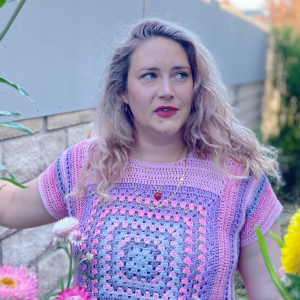
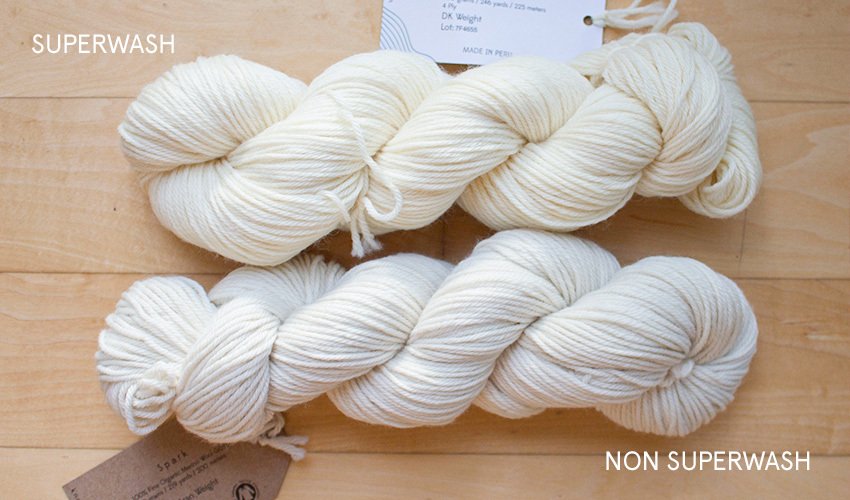
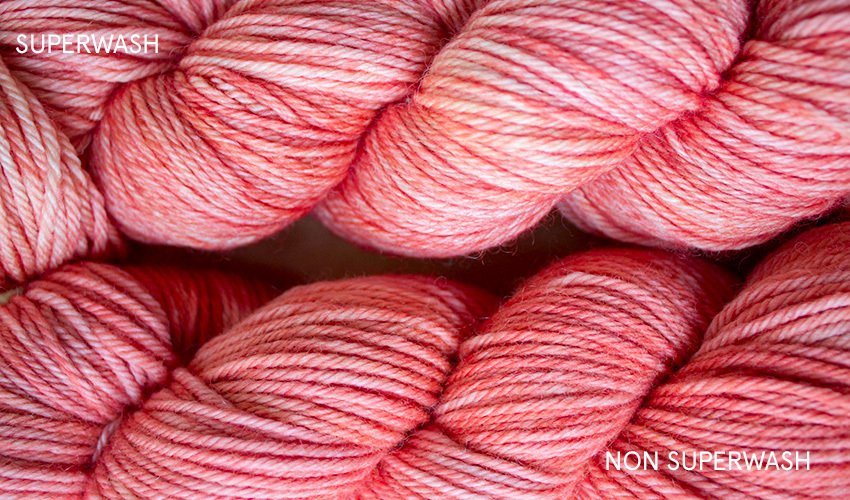
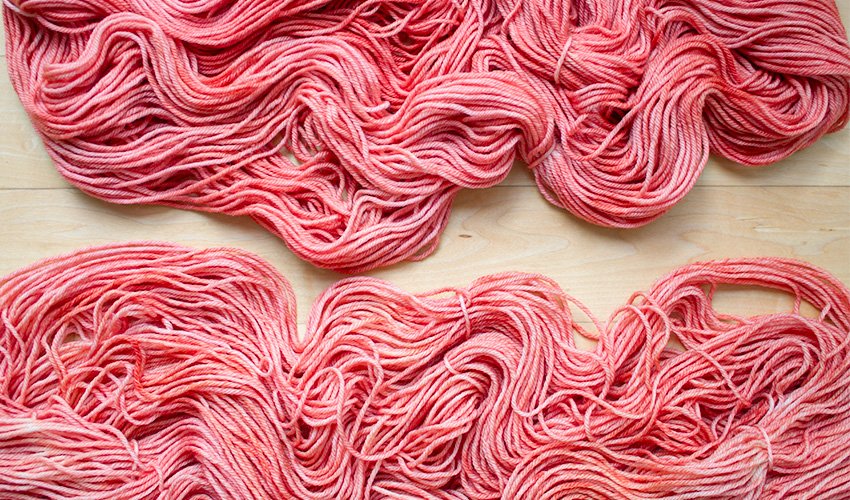






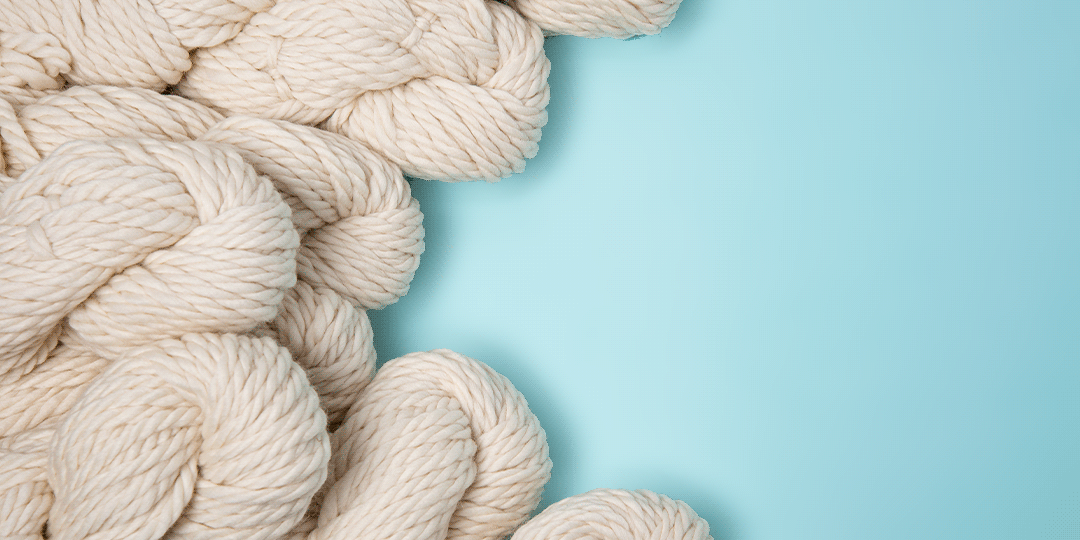

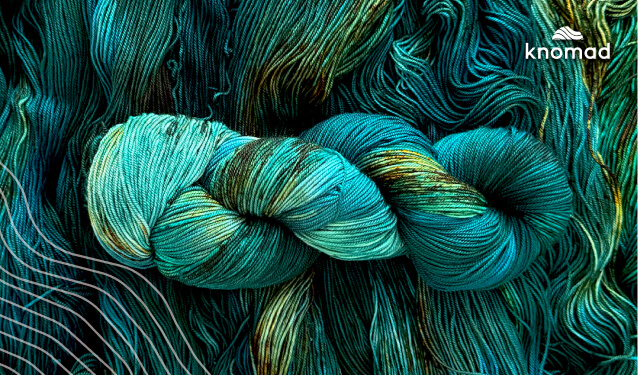
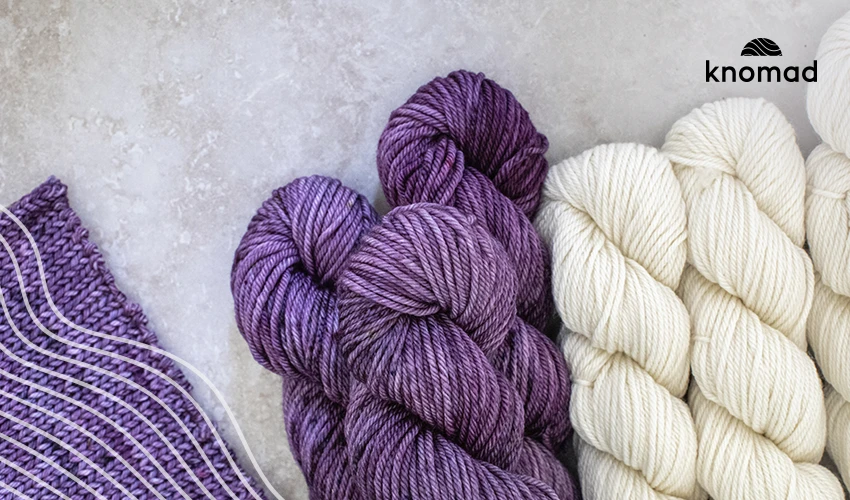
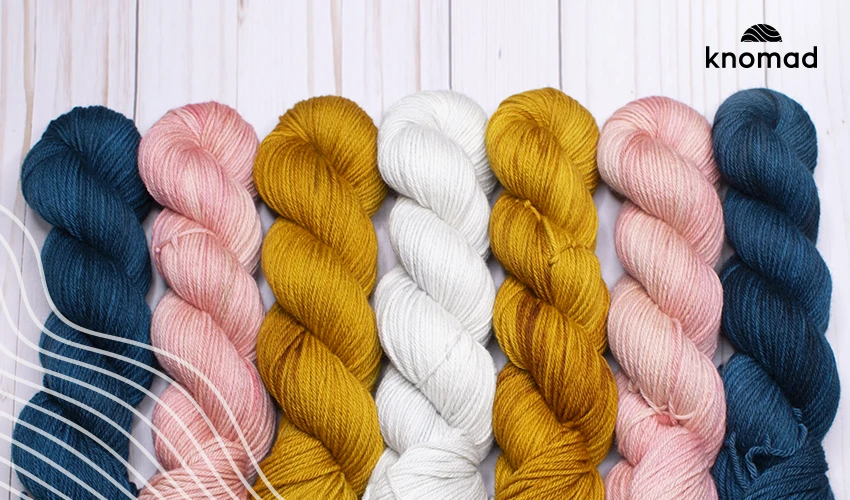
I would like to know which process is used on your yarn for the super wash process? coated or scales removed. coated with what? scales removed how? this information is helpful for me as an indie dyer.
thank you
toni ritchey
Hi Toni, the superwash wool we purchase has been treated with the Hercosett process – which is chlorine based. I hope this information is helpful to you, sorry for the delay – wanted to make sure it was 100% accurate.
Hello!
Any tips on how to obtain a more even solid color when dyeing non superwash yarn? Is it recommended to use leveling agents like amonium sulfate as for superwash bases? Thank you
Hi Isabelle, our advice for getting nice, solid color is as follows:
– Soak the yarn for at least an hour in a solution of water with a dash of citric acid.
– Submerge the yarn in the dye before heating and make sure the dye vat is stirred well before adding yarn.
– When mixing your dye, make sure the water is hot so that the dye dissolves completely. We don’t recommend adding anything besides citric acid.
We hope this helps!❤️
Tag us in your projects using: #knomadyarn
I hate to say it, but 15 minutes is not long enough to set the dye. It needs at least 30 minutes at a temperature of 170 to 180 degrees to set.
Thanks so much for sharing what works for you! I was being cautious setting this yarn as I didn’t want the non superwash to felt. If you’ve had good results using that temperature and length of time, I’m glad that readers can see what works for others. There are many factors that affect yarn color setting, like water hardness, elevation, what equipment you have available to you, etc. If you’re getting the results you like, that’s what matters. Thanks again for sharing your tips and for reading our blog!
-Gina
Do you have any plans to carry superwash products that are produced using methods besides hercosett? We’re just a little worried about the sustainability which is something our customers are looking for. Thanks!
Hi Joe, we are hoping to offer an “ecowash” option – we also are always looking to lighten our footprint! It is surprisingly difficult, but we are continuing to research this!